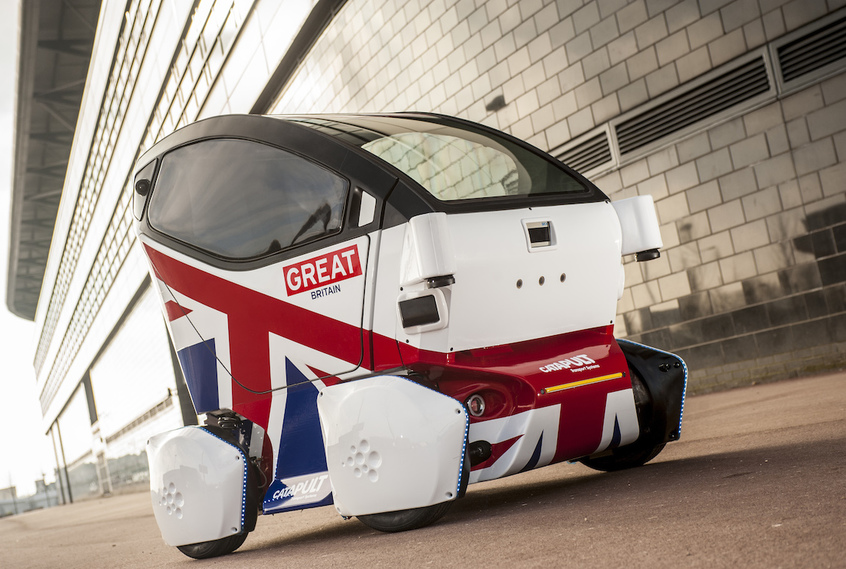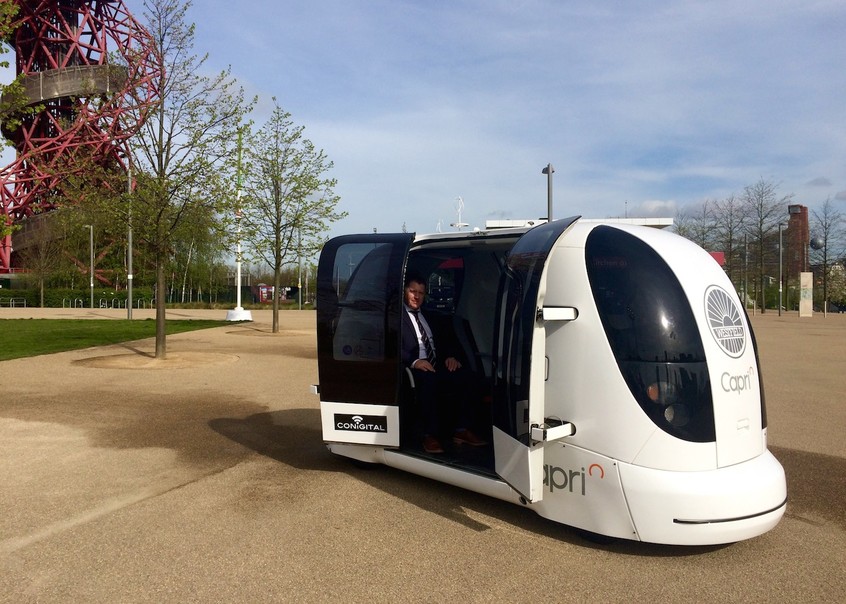Two very different visions of the future of autonomous vehicles are emerging. In one camp are car manufacturers gunning for hyper-intelligent and all-seeing “driverless cars”, powerful machines that promise to make car ownership sublime.
In the other are governments betting on more modest vehicles – pods – that pootle along at 15mph, cleanly and efficiently getting people around in cities.
The first camp represents an exciting new high-tech twist on the dominant transport paradigm, while the second turns that paradigm on its head.
Which will win?
The UK is going for the latter by investing millions of pounds to incubate connected and autonomous vehicles, or “CAVs”, in pursuit of the “mobility as a service” business model.
A consortium led by US multinational engineer Aecom was recently given £4.2m to conduct trials of a “pods-on-demand” service in London. Its proponents say poky pods have the tech edge because they focus more on chatting to their surroundings than on heroic, lone-wolf artificial intelligence.
They also claim their business model is more in tune with social trends.
Vroom?
Media attention tends to focus on the more glamorous driverless cars, however.
For instance, motoring history was made on 20 May this year when a self-driving race car completed a 1.9km circuit in front of crowds at Les Invalides in Paris, all by itself.
Dubbed “Robocar” (pictured), it was developed by a team pulled together by the London-based high-tech investment fund Kinetik in its bid to launch a new type of motor sport – Roborace – in which driverless cars go head-to-head in a clash of speed and AI.
Robocar was designed by the automotive futurist Daniel Simon, creator of vehicles for Hollywood sci-fi blockbusters.
If you have an Uber style app you can make a strong mobility case for the elderly and disabled– Moeen Khawaja, Thingful
With four, 300kW motors, its developers say it can reach speeds of 200mph. In the driver’s seat is a supercomputer from graphic chip-maker Nvidia. Its Drive PX2 “brain” processes inputs from five lidar sensors (light detection and ranging), two radars, 18 ultrasonic sensors, two optical speed sensors, six AI cameras, and a global navigation satellite (GNS) positioning system.
So powerful is this brain that it can crunch data at a rate of 24 trillion AI functions per second, Kinetik says.
On the day, though, with so much to learn on its maiden circuit, Robocar crept along the route slowly and tentatively “like a teenager on their first lesson”, as an eye witness from The Telegraph put it on 28 May.
Never mind. Robocar still fires the imagination with its promise of speed and superhuman smarts.
“This needs to be the superhero of self-driving cars,” designer Daniel Simon said at Robocar’s unveiling two months earlier in Barcelona, adding it would be “an ambassador for this amazing rise of artificial intelligence”.
Autonomous, but nice
Pods seem mundane by comparison but they point to the possibility of an end to private car ownership, with its associated problems of traffic, pollution and the need to reserve vast swathes of the urban realm for parking.

And the pod: RDM’s Lutz Pathfinder pod, used for initial trials in Milton Keynes, which ended last year (RDM Group)
Many now dream of stepping onto the street and summoning a pod with a phone. The pod detaches itself from the stream of circulating CAVs and lets you in. Instructions and payment are handled instantly also by phone. In quieter periods, surplus pods take themselves to out-of-town depots to be cleaned, maintained, and to wait for a resumption of demand.
A number of governments have caught the vision, including the UK. It has made £35m available to industry consortia who come up with good R&D proposals for developing CAV technology and applications.
Aecom’s consortium of 20 organisations, called CAPRI, won £4.2m of this cash to run trials for a “pods-on-demand” (POD) type of service, due to culminate in live tests in London.
One of the CAPRI companies is Thingful, an Internet of Things (IoT) data search and interoperability services company, which is leading on the connectivity aspects of the project.
Its chief operations officer, Moeen Khawaja, says media distort the picture by focusing on the glamour of self-driving cars, while the socio-economic drivers of pods are deeper and more urgent.
Pods, he argues, have huge commercial potential to help people with restricted mobility, such as the more than 30 million blind people and five million wheelchair users in Europe. “If you have an Uber style app you can make a strong mobility case for the elderly and disabled,” he says.

Aecom’s Lee Street in a CAPRI-branded pod, to begin testing this year (Aecom)
Lee Street, Aecom’s Director and Head of Technology in Europe, also sees pods’ social inclusivity as a plus.
 “When people can’t afford a car, or they’re too young, or elderly and lacking confidence, they could have shared use of it and wouldn’t need to own a vehicle,” Street said. Initially, such a concept would not require the entire network to be autonomous. The pods could be the first autonomous vehicles to be integrated, he added, with driverless cars joining them when they are ready.
No car is an island
Another claimed advantage is the pods’ emphasis on connectivity, whereby the CAVS are in constant touch with other vehicles and transport infrastructure, over the ruggedly individualistic focus on autonomous AI, so celebrated in Robocar.
“For CAPRI, we’ll be studying the cooperative messaging from pod to pod, but also between pods and fixed infrastructure and between pods and the traffic infrastructure management system,” Khawaja said.
“Questions will include can the pod make sense of the weather sensors around it? Can it find out about parking meters and parking notifications and make use of that information? Can it share that information with other parties such as Transport for London?”
The perils of early over-reliance on AI were made apparent in May last year when one of Tesla’s cars, a Model S equipped with Tesla’s branded Autopilot diver assistance software, crashed into a truck at 74mph, killing the human occupant, Joshua Brown, on a state highway in Florida.
Khawaja worries that the near infinite combinations of phenomena in the physical world may be too much for AI. Connectivity, the argument goes, allows CAVs to speak to each other and “cooperate”. But Khawaja says car makers are afraid to embrace open connectivity. “They worry that tech players like Google would eat them alive if they let them into the operating systems and they would be relegated to making parts,” he said.
- An in-depth article by David Smith containing interviews with other CAPRI researchers and discussions about business models and security is published in the latest issue of Construction Research & Innovation (CRI), available free to GCR readers here.
Top image: The Robocar, a fully-autonomous race car, completed a 1.9km circuit in Paris in May this year (© Roborace/Daniel Simon)






